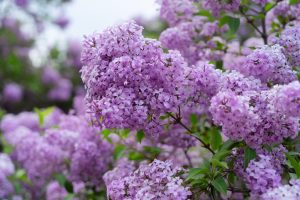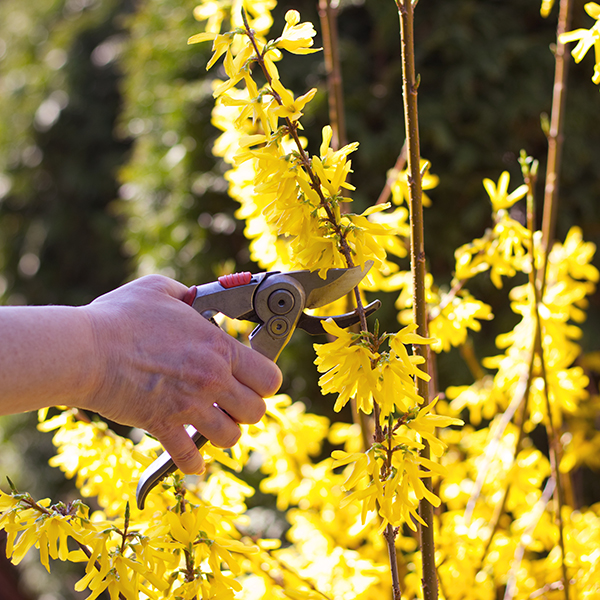“Is there a general rule of thumb for when to prune deciduous flowering shrubs?” is a question posed by beginning gardeners all the time. This is as it should be, since, when it comes to pruning, you do not want to be shooting first and asking questions later. Becoming informed on this subject before taking action can save you a lot of heartache.
Why You Should Prune
To answer the question of when to prune deciduous flowering shrubs, we must first determine the reason behind the pruning. Do you wish to rejuvenate overgrown, neglected shrubs through pruning? Or is this to be merely a routine pruning to maintain the flowering shrubs within certain dimensions? Each has its time and place.
Typically, we wish to prune deciduous flowering shrubs in order to shape them or keep them within certain bounds, but we worry that we will miss out on this year’s blossoms if we prune at the wrong time—thus the well-founded fears beginning gardeners have about pruning.
Before putting those fears to rest, let me tackle a very different question that some beginners have: Why bother pruning at all? If you have sufficient space to allow a plant to get as big as it can, is there still some incentive to pruning it? The answer is yes. The benefits of pruning deciduous flowering shrubs are real, and two of them worth mentioning here are as follows:
- You will be able to display the deciduous flowering shrub to its fullest advantage if you learn how to prune it wisely. A single branch sticking out awkwardly can ruin the appearance of a bush, as can the presence of dead branches. Branches that rub against each other do so to the detriment of both, not only in terms of looks but also in terms of health. In the case of suckering shrubs, unwanted growth may get messy and even sap strength from the overall plant.
- As if all of that were not enough, an added benefit of pruning a flowering shrub properly is that it will end up blooming better.
Routine Pruning, Rejuvenation Pruning, and Basic Techniques
Here is the general rule of thumb to know when to prune a particular plant:
If you are undertaking routine pruning, observe the shrubs’ blooming habits:
- For shrubs that bloom in summer or fall on the current year’s growth, such as beautyberry (Callicarpa dichotoma), prune in late winter or early spring.
- For shrubs that bloom in spring on last year’s growth (e.g., Forsythia), prune after their blooms begin to die.
As to how to conduct such routine pruning, the Purdue Extension sums it up by listing three techniques. We list them below, beginning with the mildest kind, and ending with the type that entails cutting the greatest amount of vegetation:
- Pinching is just what it sounds like: using your fingers (long fingernails help), you pinch off small amounts of vegetation at the tips of branches.
- Heading back entails shortening branches, using your pruners. The cut will extend “back to a good bud or lateral branch.”
- In thinning, you open up the inside of the shrub by pruning back select branches all the way back to the “main branch, trunk, or soil line.”

If you are pruning flowering shrubs to rejuvenate them, the best time to prune is late winter or early spring. True, pruning early-flowering deciduous shrubs at this time will reduce or eliminate blossoming in spring that year, but the trade-off is in gaining healthier shrubs that will bloom more vigorously for the long run.
Rejuvenation pruning is commonly done on overgrown lilac shrubs. They are one of the shrubs that respond well to this kind of pruning. It is a drastic kind of pruning, but it is not as scary as it sounds, because each year you are only pruning out 1/3 of the branches coming out of the ground. You start with the oldest 1/3 the first year. The second year, you cut out another 1/3 of the oldest remaining branches. The third year, you prune out the oldest branches that remain, leaving only the youngest branches. The idea is to have the youngest (and, we assume, healthiest) branches take over and “become” the lilac bush. “Rejuvenate,” after all, means “to make young again.”
By David Beaulieu
From thespruce.com








